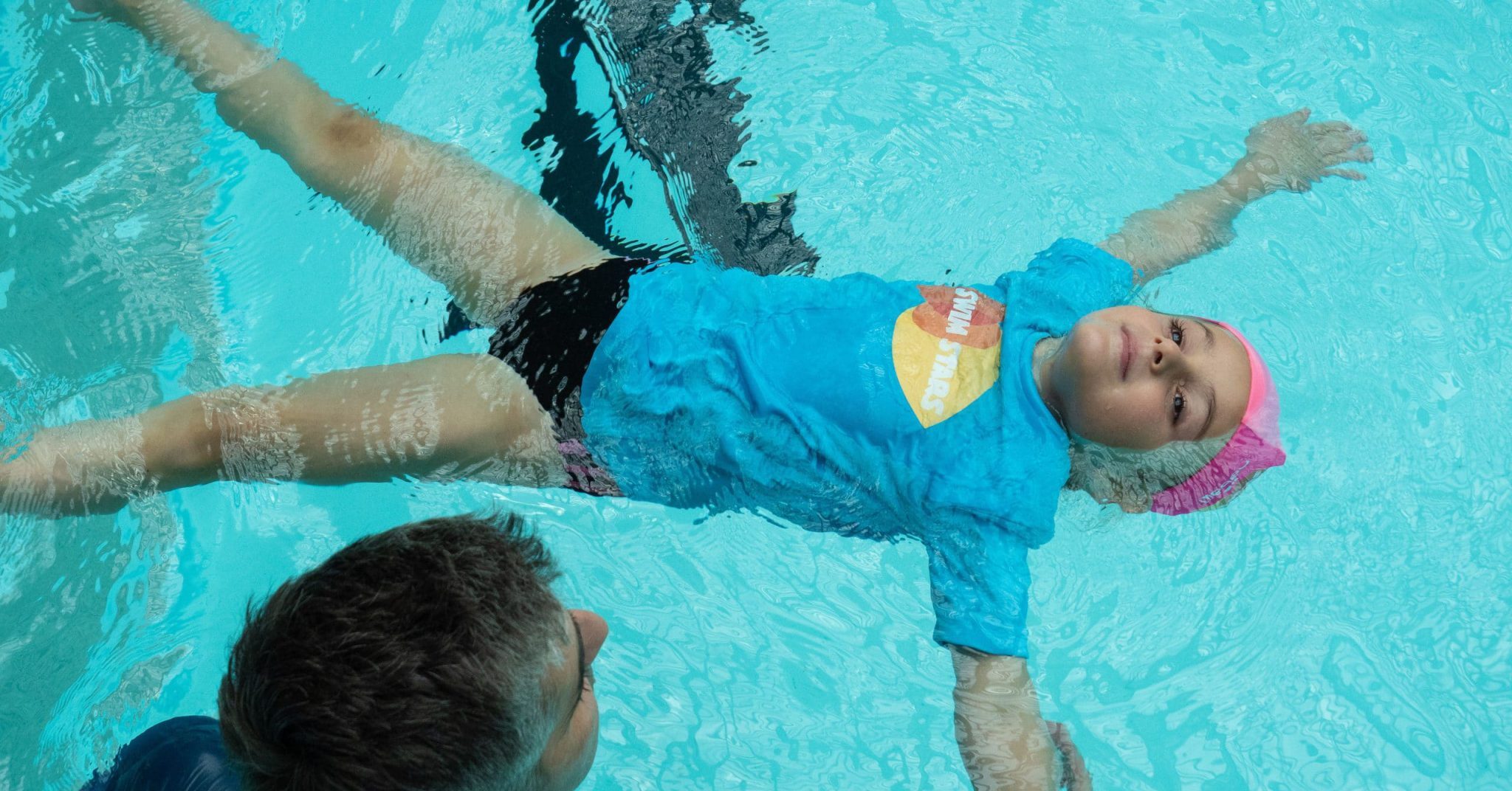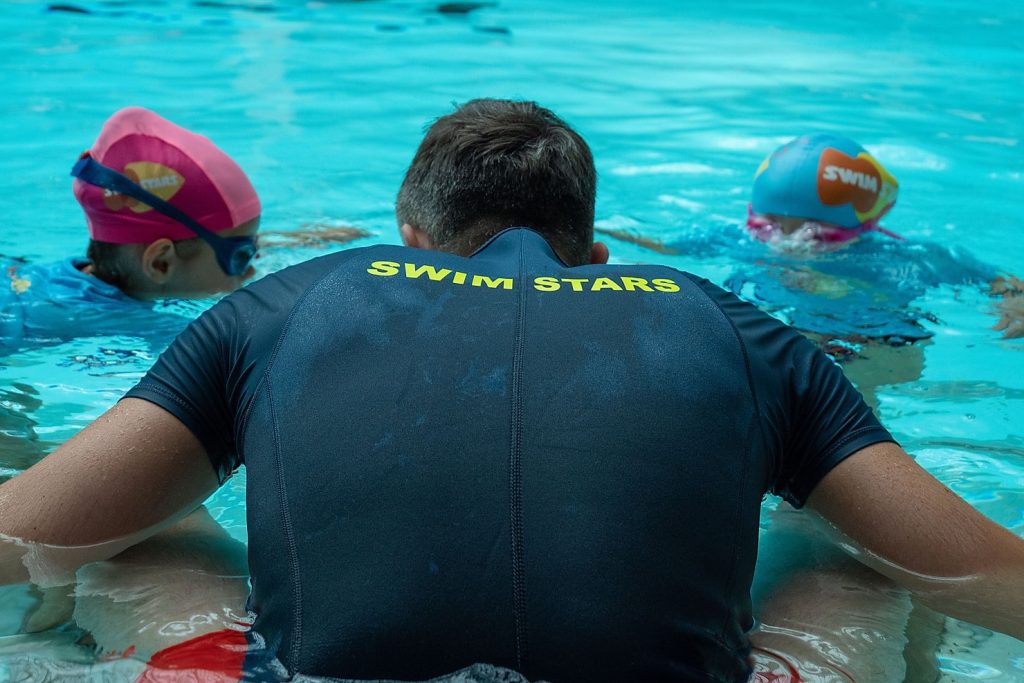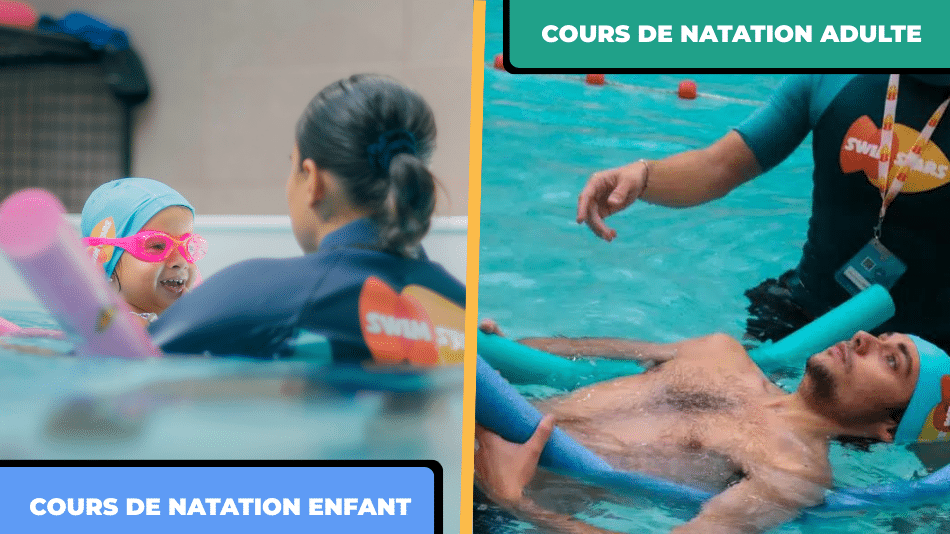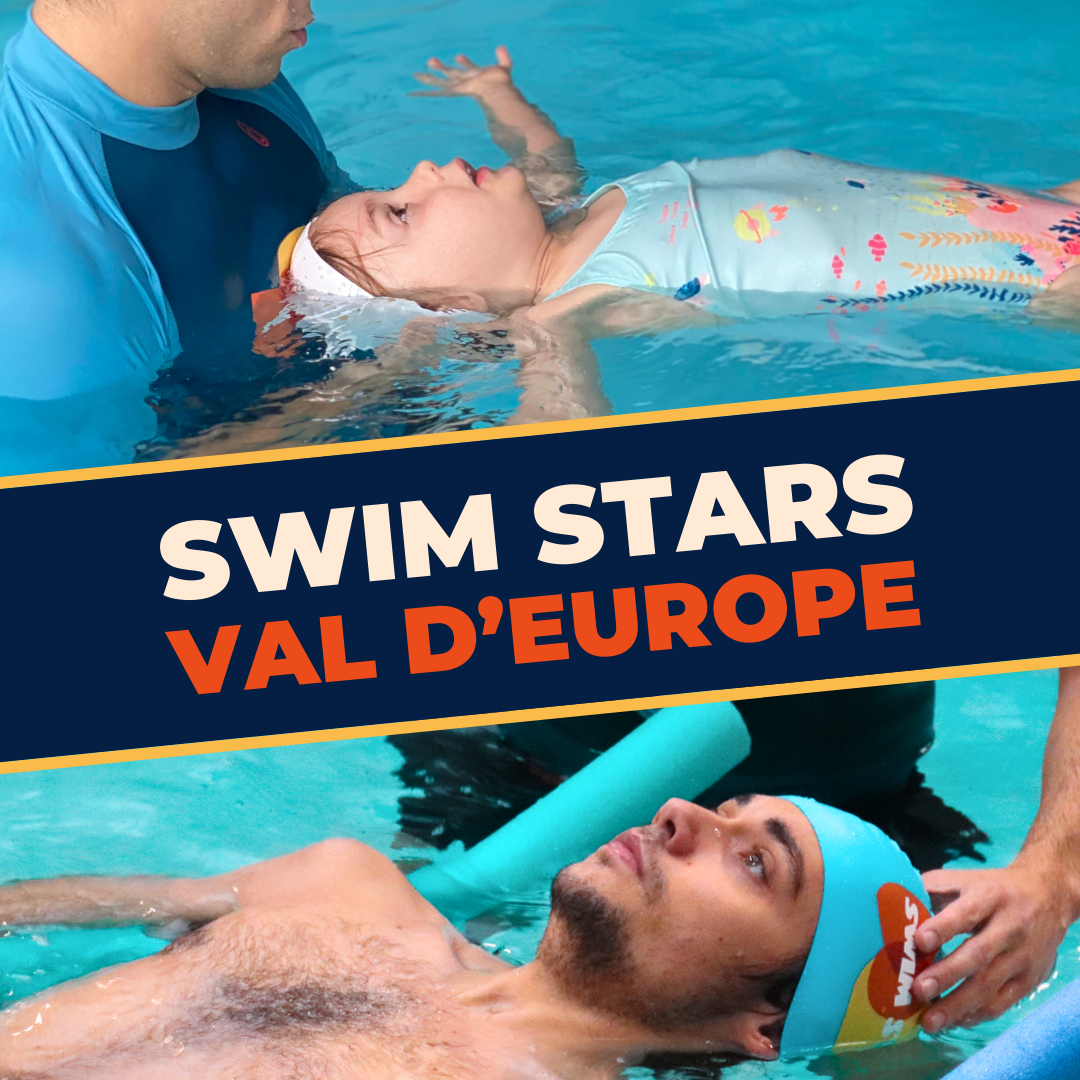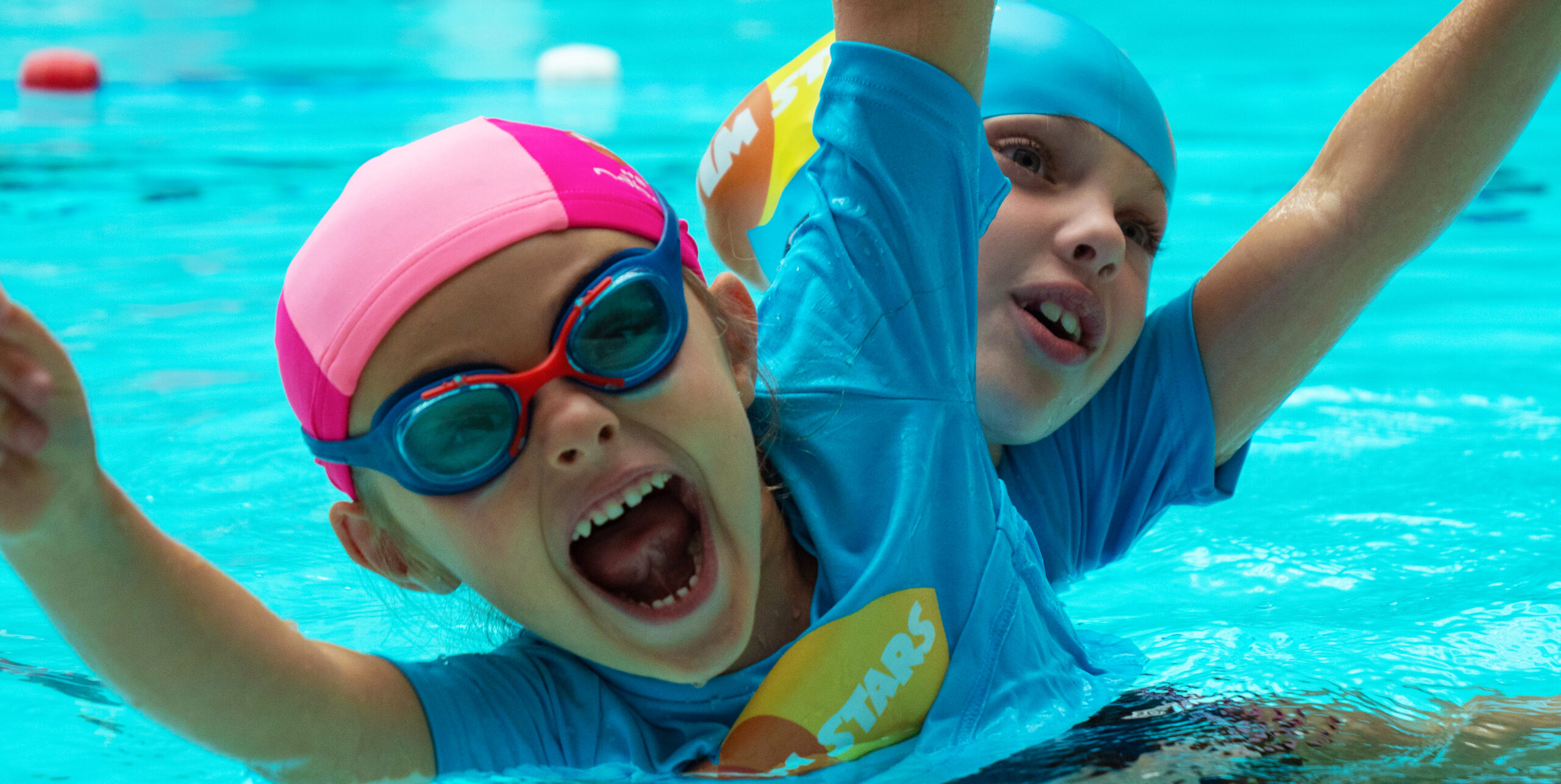Swim Stars coaches always in the water with students: why and for what pedagogy?
Our Swim Stars coaches are always in the water with the students for a better pedagogy. The small group classes allow the coaches to conduct a dynamic session. Because the coach in the water challenges the students throughout the course. Thus, by alternating group and individual exercises, the coach allows everyone to progress.
The coach in the water for more proximity
The AUTO-RESCUE® in-water coach to keep toddlers safe
For the SELF-RESCUE® classes (self-rescue skills from age 3), it is essential to ensure the safety of our little swimmers. But above all, to create a relationship of proximity and trust. Because this is often an age when mom and dad are very important to the child. Why? Because they convey better than anyone else the sense of security that a child needs. The coach’s goal is to reassure the little ones that no one is in danger of swallowing the cup!
It is also the first time that a small fish usually joins other small fishes unknown to the group. What’s more, with a man or woman wearing a diving suit, who is none other than the coach. It is finally as stressful as the first day of school. Indeed, we are far from imagining how scared a child can be, especially if the pool is very big! For this reason, there are
several pools of different sizes within our
within our learning network.
For a great start, the immersion of small fish is done gradually, especially with the help of stairs. Indeed, the configuration of many pools, like hotels, allows to enter the water gently step by step. When it’s a pool with a ladder, like in gyms, we also adapt the water entrance so that they can hook the edge. The depth is average and generally the same throughout the pool, but we also have a regressive depth in some of our pools.
However, the principle is the same. First, we immerse the small feet, then the legs. Then, we sit these buttocks if we are on steps and we begin the bubbles, then we wet the face. We go for the ring to soak more and we work the starfish to be safe. Then, we take off with the frit in support to learn how to move. Finally, for the most daring, we jump into the water with or without frit to join his coach in the arms.
In the water learning to build confidence
The beginning of the first grade is often a fundamental step in the child’s development. In fact, it regularly coincides with the beginning of swimming lessons in school. For many, this prospect is indeed an anguish. Especially for parents who are not reassured to let their fearful child start this activity. While municipal swim clubs may refuse admission to children who do not meet the age and skill requirements after an assessment test, Swim Stars accepts all children. This is the case from the age of 5 in the learning course (or less for children who have validated theAUTO-RESCUE®).
The same caring and reassuring approach as for toddlers is favored because fear with age can be amplified. Thus, for beginners in learning, the basics ofAUTO-RESCUE® are regularly evaluated because there is a pedagogical continuity between the two programs. Indeed, the difference lies essentially in the maturity, concentration, understanding of the instructions and the physical capacities of the child in terms of coordination. It is essential to start learning the backstroke, the crawl and the breaststroke.
Therefore, it is essential for Swim Stars that a 5 year old child, even a beginner, can evolve with children of the same age in learning and not in SELF-RESCUE® . This is essential for the child’s confidence and much more rewarding than being with toddlers. Even if it is difficult at first, the small group allows the child to watch others do it, motivates him more than anything else, and allows him to imitate his buddies. After all, why not me? In only one month, progress is very fast.
Out of the water in improvement to correct the technique
It’s time for the big swim and the long distances! Indeed, it is time to swim for several lengths and with intensity. Now that the children have gained independence, the coach can get out of the water. Security and trust have been validated and it is now the requirement that will prevail. In the course of improvement, it is therefore sometimes useful to give instructions from the outside for a better analysis of the swimming technique. This is also true for turns or initiation to diving: position of the arms with the head tucked in and starting position for impulse. For certain technical exercises, at the discretion of the coach, the latter can enter the water to accompany the movements and improve them.
What about adults? In the water as an adult aquaphobe to support psychologically
For example, in adult aquaphobia courses, whose objective is to fight against aquaphobia, the reassuring presence of the coach in the water near the students is a real
psychological support
.
Beginners and advanced adult perf players are then naturally much more autonomous and independent.
In general for Swim Stars, having the coach in the water is an asset in order to give the student confidence , to listen to him and to accompany him. And never forget to have fun and enjoy yourself!
https://blog.swimstars.fr/pedagogie-coach-swim-stars-portrait-emilie/
